Be the first to know when new content like this is available!
Subscribe to our newsletter to get alerts about new posts, local news, and industry insights.
Thank you! Your submission has been received!
Oops! Something went wrong while submitting the form.
2023 was a unique year for cannabis licensing. The industry contraction continued with license counts dropping, fewer new licenses being issued, and Oklahoma’s moratorium finally took effect. This post will explore how things changed during the first quarter of 2024 and what the next few quarters may bring.
Since the beginning of the year, several states have made moves to add, expand, or stymie their programs:
- Ohio – Lawmakers approved rules allowing adult use to start in June rather via dual licensing
- New Hampshire – Lawmakers recently approved a proposal that caps retail locations at no more than 15 state-controlled franchise locations statewide and also allows municipal opt-outs
- North Carolina – The Cherokee Indian tribe opened up a dispensary on tribal land
- New York – Overhauled the Office of Cannabis Control and has started to shut down illicit stores
- Virginia – Governor Youngkin vetoed a marijuana market bill
These five examples prove that cannabis licensing is still a choose-your-own-adventure opportunity. Regulators and governors are very creative in coming up with new ways to structure programs. Below we outline the changes in some key license types across the country.
- 791 new licenses were issued for cultivation, manufacturers, and stores in Q1 2024, down from the 1,691 issued in Q1 2023 – a 51% decrease
- 24 states added stores, 18 added manufacturing licenses, and 18 added cultivation licenses
- Total Active licenses are down 2.1% in the quarter with cultivation -4.3%; manufacturing -1.23% and dispensary/retail +.8%
The oddest takeaway from the data is that the ratio of new licenses issued for cultivation, manufacturing, and retail is exactly the same as a year ago. It could be a coincidence, or we’ve uncovered some golden ratio of license issuance. For Q1 in 2023 and 2024 retail licenses accounted for 42% of new licenses, cultivation was second at 37% and manufacturing was third at 21%.
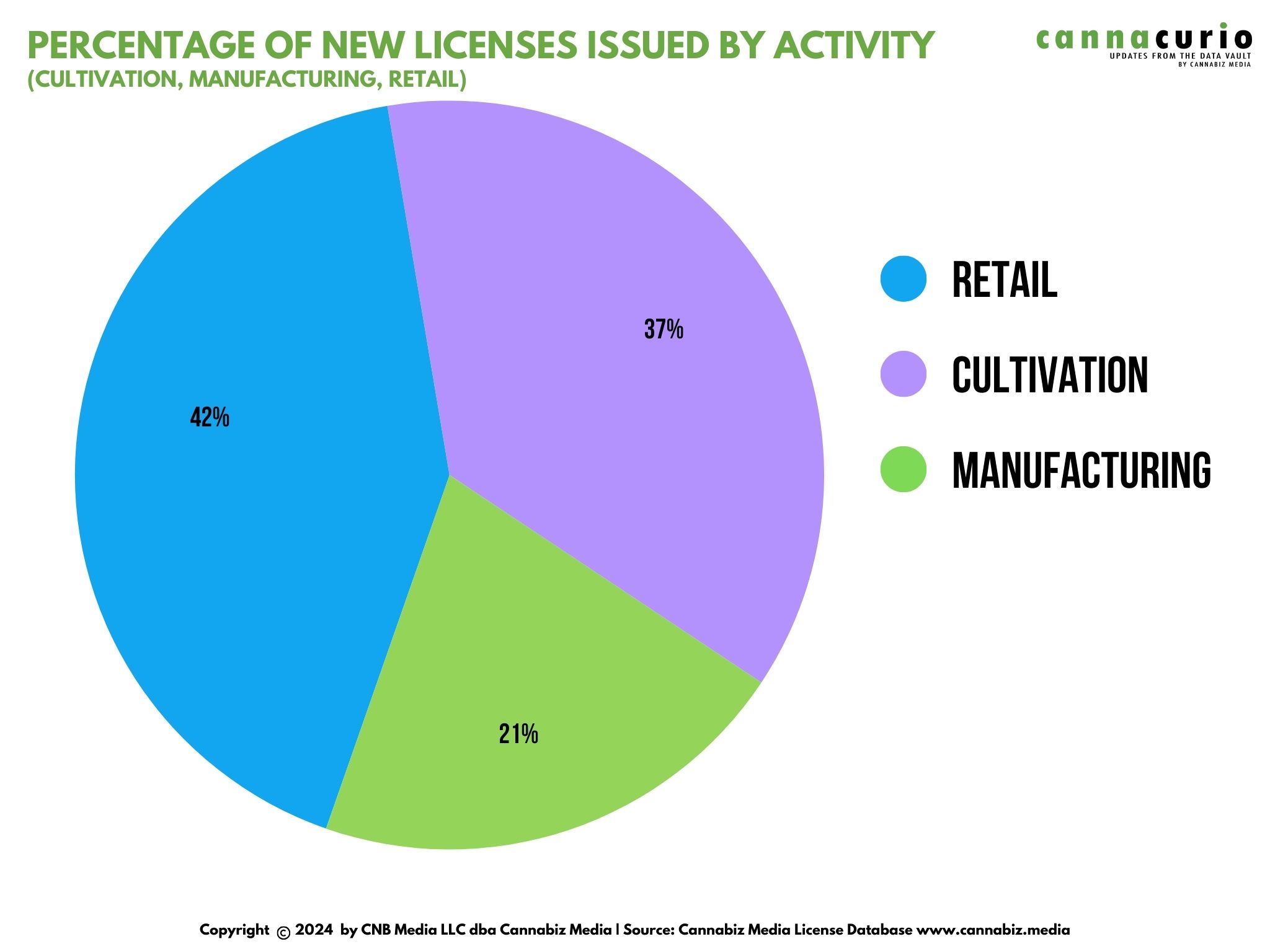
We can see below that the number of stores and manufacturers increased over the quarter with new stores on the rise.
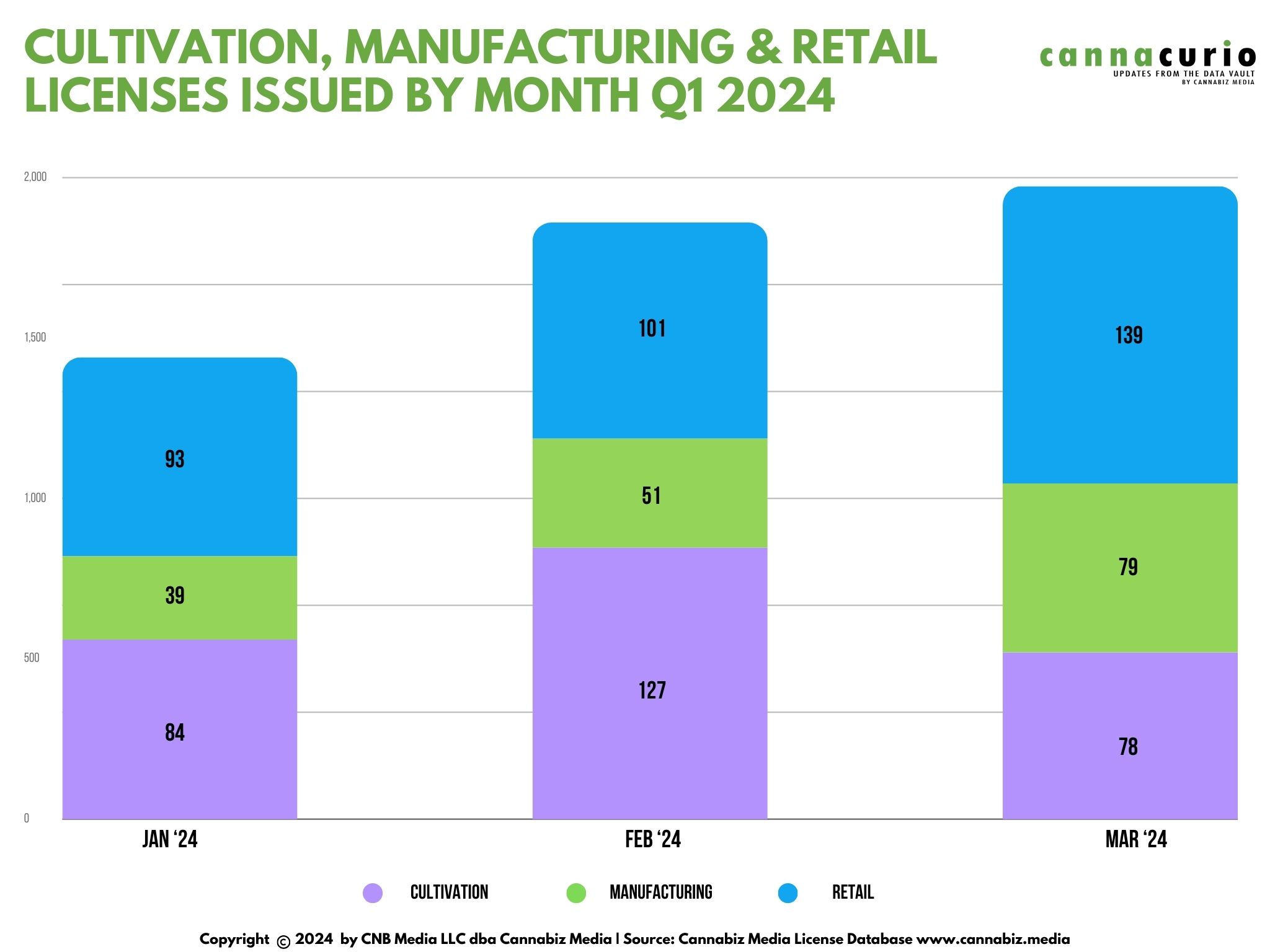
Here’s a recap of three of the major license types in the value chain.
Stores
- 333 new store licenses were issued in the quarter compared to 699 last year
- 4 states accounted for 60% of these licenses: New Jersey, Michigan, New Mexico, and New York
- Oklahoma accounted for 1.2% of the new licenses down from 47% last year
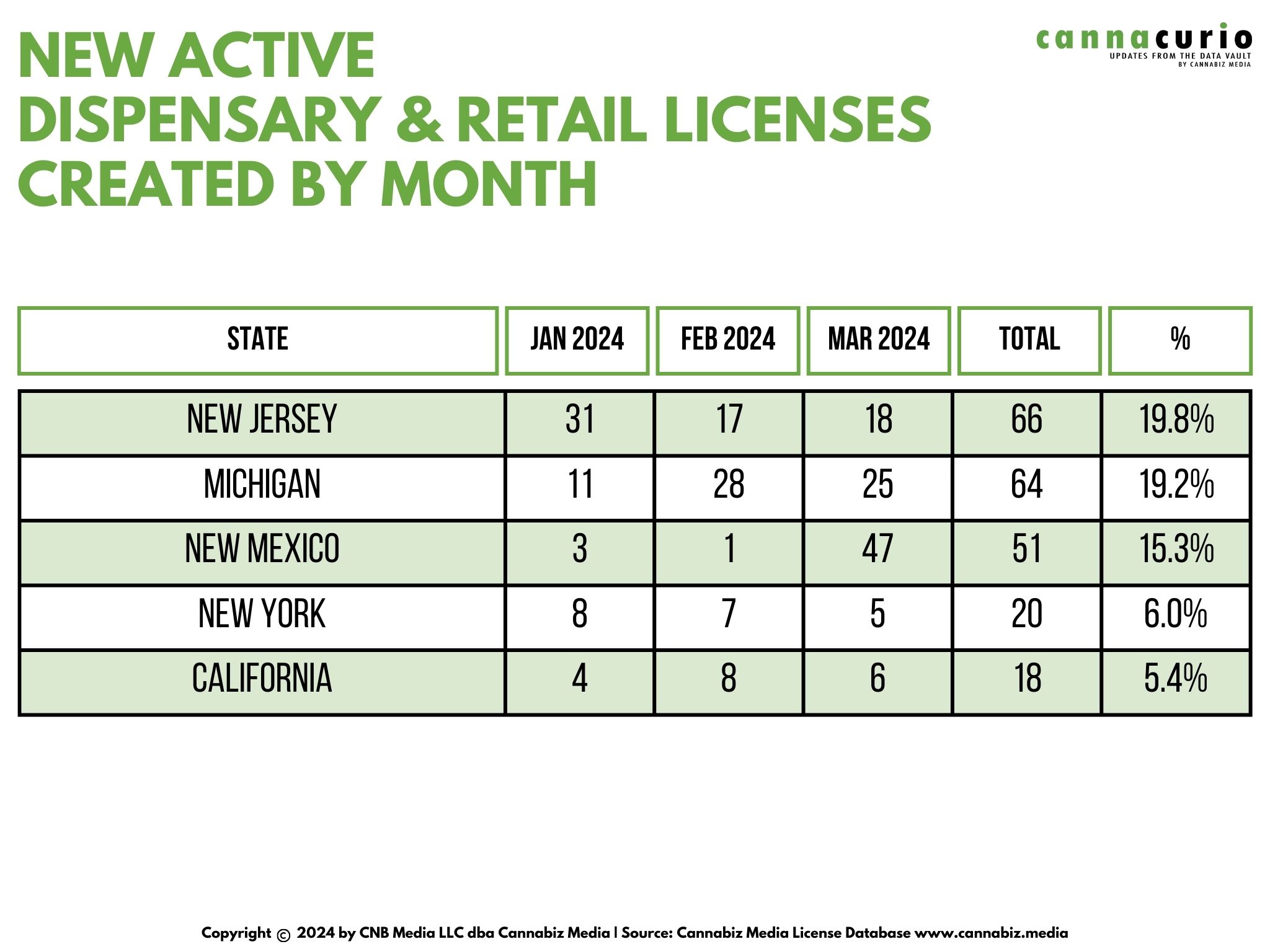
Cultivation
- Regulators issued only 289 cultivation licenses in Q1, slightly higher than Q42023’s 277
- California, Michigan, and New Jersey accounted for 66% of the new cultivation licenses
- Several large growing states have license moratoriums in place
The following table is the quarter-end snapshot of new cultivation licenses added by month this year for the top 5 states. California and Michigan have been at the top of this leaderboard, along with Oklahoma for years. The complete list of issuing states is available on our Cannabis Market Intelligence Platform www.cannabiz.media.
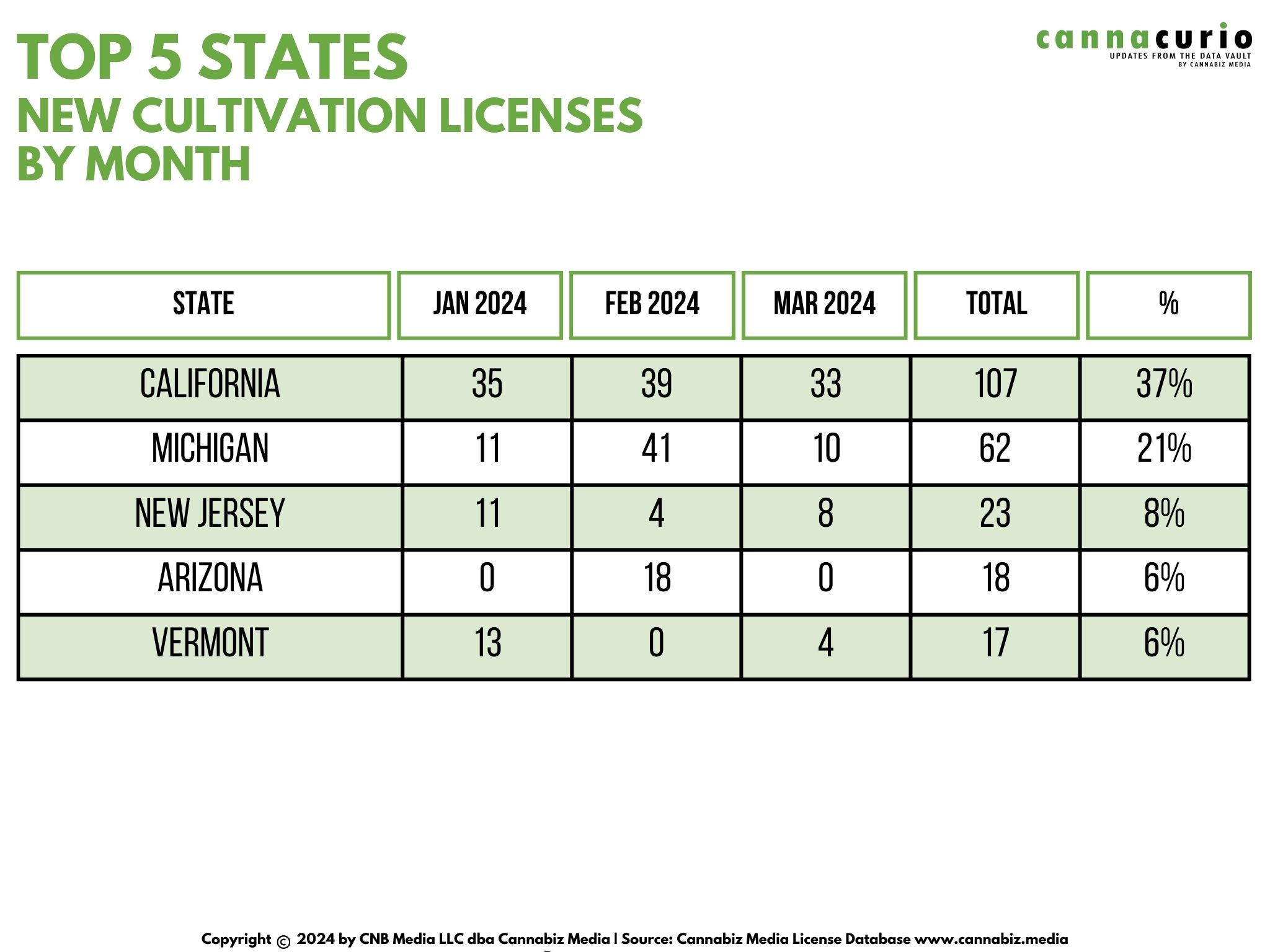
Manufacturing
- 169 new manufacturing licenses were issued in Q1
- New Mexico led and issued 61 licenses (36%)
- The total number of manufacturers was stable at 6,013, down slightly from 6,085 at year-end
As we see with other activities, most new licenses were issued by a handful of states. 5 states issued 76% of all new licenses. New Mexico, New Jersey, Michigan, California, and Arizona sat atop the leaderboard. The following graph shows states that issued at least 10 new manufacturing licenses last year.
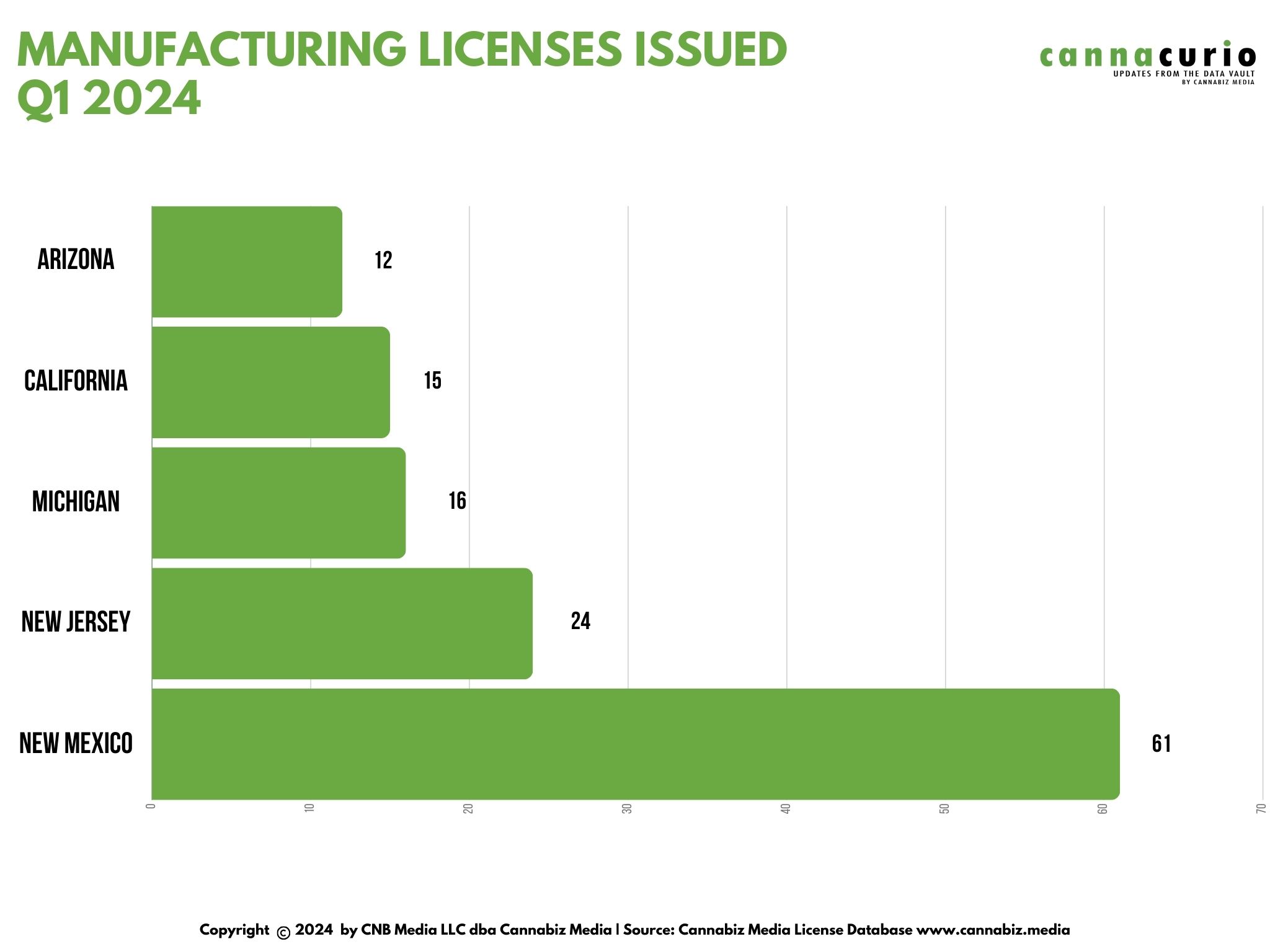
The graph below includes the number of active licenses for all activities we track against active facilities. We consider a facility to be a location that has multiple licenses owned by one company. These are significant in tracking grow licenses in California where a cultivator may have many small licenses on one farm. Similarly, this occurs with states that require a store to have both a dispensary and retail license – this counts as one facility.
Over the last 12 months, there has been a gentle decline in licenses and facilities. In looking at the state-by-state detail, much of the decline can be traced to the deflation in Oklahoma. However, with new and expanded programs coming along, we may see an upward turn in these lines.
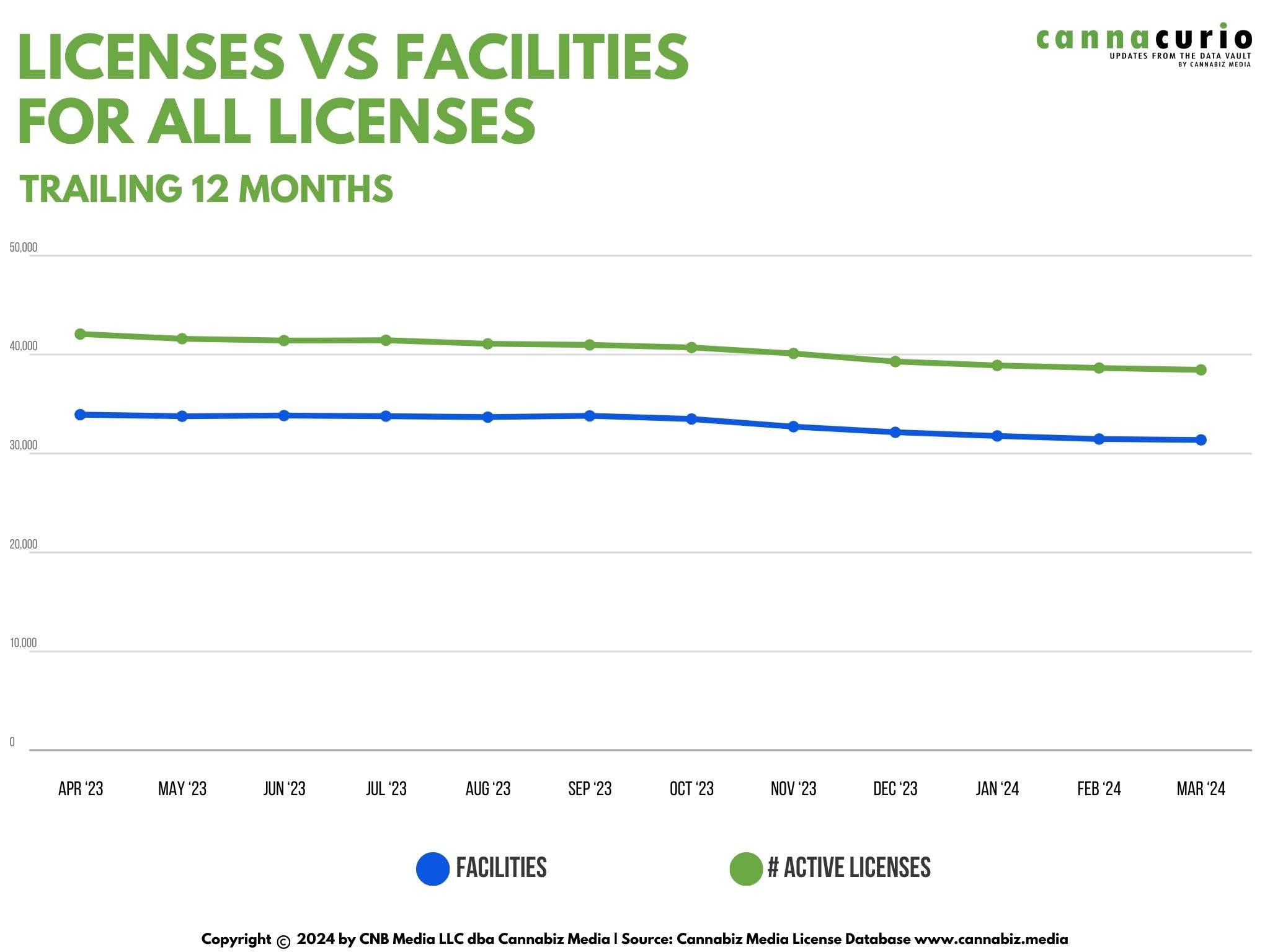
Ed Keating is a co-founder of Cannabiz Media and oversees the company’s data research and government relations efforts. He has spent his career working with and advising information companies in the compliance space. Ed has managed product, marketing, and sales while overseeing complex multi-jurisdictional product lines in the securities, corporate, UCC, safety, environmental, and human resource markets.
At Cannabiz Media, Ed enjoys the challenge of working with regulators across the globe as he and his team gather corporate, financial, and license information to track the people, products, and businesses in the cannabis economy.
Ed graduated from Hamilton College and received his MBA from the Kellogg School at Northwestern University
Cannabiz Media customers can stay up-to-date on these and other new licenses through our newsletters, alerts, and reports modules. Subscribe to our newsletter to receive these weekly reports delivered to your inbox. Or you can schedule a demo for more information on how to access the Cannabis Market Intelligence Platform yourself to dive further into this data.
Cannacurio is a column from Cannabiz Media featuring insights from the most comprehensive cannabis market intelligence platform. Catch up on Cannacurio posts and podcasts for the latest updates and intel.
- SEO Powered Content & PR Distribution. Get Amplified Today.
- PlatoData.Network Vertical Generative Ai. Empower Yourself. Access Here.
- PlatoAiStream. Web3 Intelligence. Knowledge Amplified. Access Here.
- PlatoESG. Carbon, CleanTech, Energy, Environment, Solar, Waste Management. Access Here.
- PlatoHealth. Biotech and Clinical Trials Intelligence. Access Here.
- Source: https://www.cannabiz.media/blog/cannacurio-96-2024-q1-licensing-round-up



